Measuring instrument and instruments for accurate measurements in inches
This category includes measuring and marking tools that have double markings - inch and metric. Their scales or displays have readings in millimeters and inches. Such tools give you a simple and precise correspondence between inches and millimeters, the inch-mm translation is carried out instantly and "automatically". If you need an inch ruler, such tools are also for you. Auxiliary measuring devices include: plates, rulers, prisms, measuring rolling pins, sine rulers, levels, measuring racks and wedges for measuring holes. All measuring instruments are highly accurate and require careful maintenance. Ensuring appropriate conditions of use and storage is a guarantee of their durability and accuracy. Improper handling leads to premature wear and damage, inability to operate and even damage to measuring instruments.
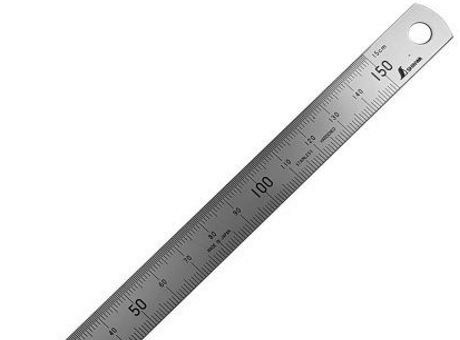
Inch ruler, 150 mm/6 inch
The inch scale is graduated from 0 to 1inches - 3 inches, the upper scale on the ruler is made in increments of -1/20", the lower in increments of 1/32".
From 3 to 4 inches, the upper scale on the ruler is made in increments of -1/50", the lower in increments of 1/64", from 4 inches, the upper scale on the ruler is made in increments of -1 /10", the lower in increments of 1/16"
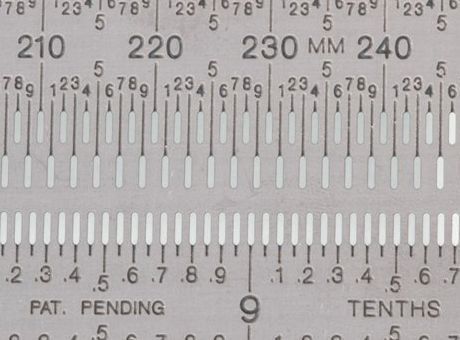
Inch ruler, 250 mm inch/metric scales
The ruler is flat with a length of 250 mm with inch and metric scales, with a marking accuracy of 1/20” and 1 mm. It is the simultaneous presence of high-precision markings in mm and inches that make this line unique. The holes in the ruler are made by water cutting for a pencil with a rod diameter of 0.5 mm.
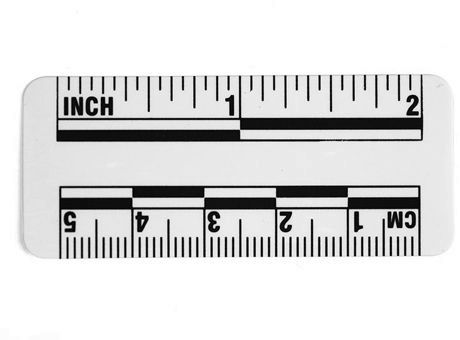
Inch ruler, Mini 2-inch scale
The ruler is 50 mm long with inch and metric scales, with a marking accuracy of 1/20” and 1 mm. It is the simultaneous presence of high-precision markings in mm and inches that make this line unique. The holes in the ruler are made by water cutting for a pencil with a rod diameter of 0.5 mm.
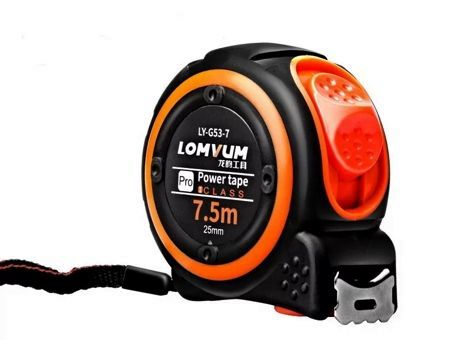
Inch Tape measure for PVC pipes up to 2 inches in diameter
The tape measure has a wide tape 1-1 / 16 inches (26.98 mm) wide and an exclusive rotary magnetic tip for accurate measurements when laying PVC pipes, conduits and pipes up to 2 inches (50.8 mm) in diameter.
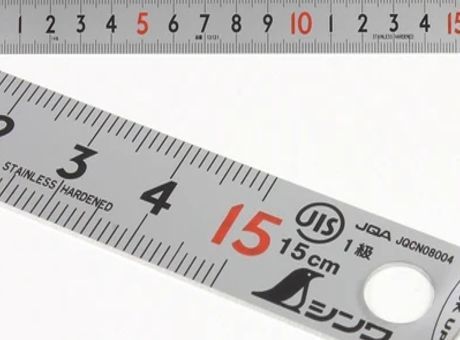
Stainless Steel Ruler in inch metric
On the reverse side they give you a millimetre-inch conversion table but not a tap drill table. A special feature is the raised edge on the right-hand end that makes picking them up from a flat surface a doddle. Pressing down on the raised edge lifts the 15 and 30 cm rulers all the way up; the 60 cm and 100 cm rulers lift up only half-way.
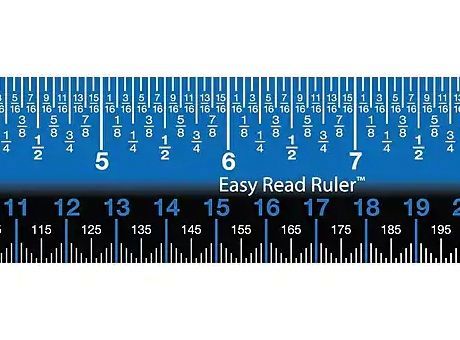
Stainless Steel Ruler, Standard/Metric, 12 inch, Blue
Easy Read Rulers eliminate confusion and strain. On the English side, each line is marked with a fraction. On the metric side, the hash marks rise and fall making it easy to identify the measurements. Vibrant colors provide a non-glare surface. Non-slip cork backing. with 1/4, 1/8 and 1/16 Inch Labeled Increments
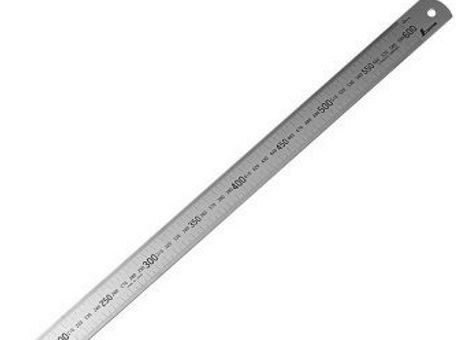
Inch ruler, 1000 mm/36 inches
The steel rulers of the Japanese manufacturer SHINWA Measuring Corporation are made of durable stainless steel. The accuracy of the rulers declared by the manufacturer is +/- 0.2 mm. The matte coating of the ruler makes it convenient to read measurements in bright lighting conditions. Thin risks are applied by etching, which makes them accurate and durable.
How to Read or Convert a Ruler in Inches
If you’re American, this is the measurement you probably know better than centimeters, which are sometimes included on your standard 12-inch, or 1-foot.
Right away, you should be able to tell that this ruler uses inches, as it’s divided into 12 equally spaced areas (labeled 1-12), and we know there are 12 inches in a foot (ignore the cm below).
Now, notice the lines between each inch, with some longer and some shorter than others. Each of these tiny lines represents a fraction of an inch. There are five different lengths of lbrines in total.
Each inch is divided into 16 lines, meaning that the space between each line is 1/16 inch long—this is the smallest length you can measure with a ruler. (Note that some rulers only go down to 1/8 inch lines, whereas others go down to 1/32 inch lines.)
The inch is the biggest unit on a ruler and is represented by the longest line. Each 1-inch line is labeled with a number indicating what inch it is on the ruler (as the image above shows).
The second-biggest unit on a ruler is the 1/2 inch, which is represented by the second-longest line. These typically aren't labeled but might be on some rulers (in which case you'd see numbers such as 1 1/2 in, 2 1/2 in, etc.).
The 1/2-inch line is located midway between every inch on a ruler. The midpoint between 7 and 8 inches, for instance, would be 7 1/2 (or 7.5) inches.
- 1/16 inch
- 2/16 (1/8) inch
- 3/16 inch
- 4/16 (1/4) inch
- 5/16 inch
- 6/16 (3/8) inch
- 7/16 inch
- 8/16 (1/2) inch
etc ...
The standard metric ruler is 30 cm long. Each centimeter is labeled with a number to show the measurement it's referring to. You might see inches on the other side of your metric ruler. In this case, refer to the instructions above to learn how to read a ruler in inches. Also, be aware that 30 cm does not directly equal 12 inches, even though they are often put on the same ruler!
